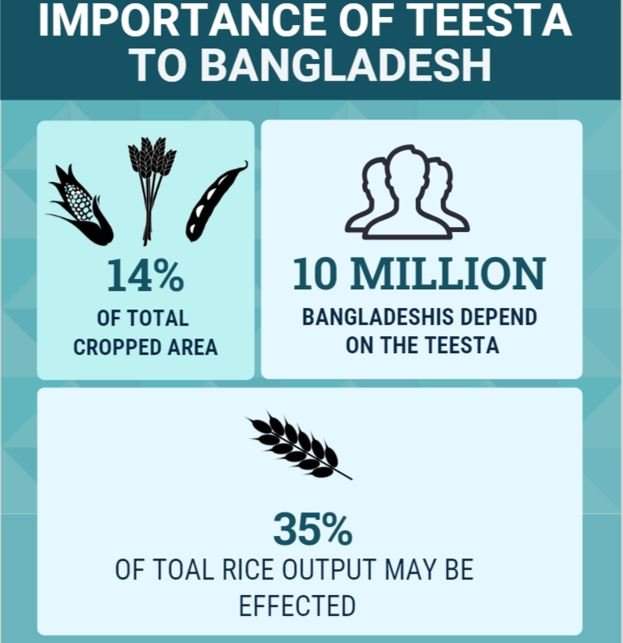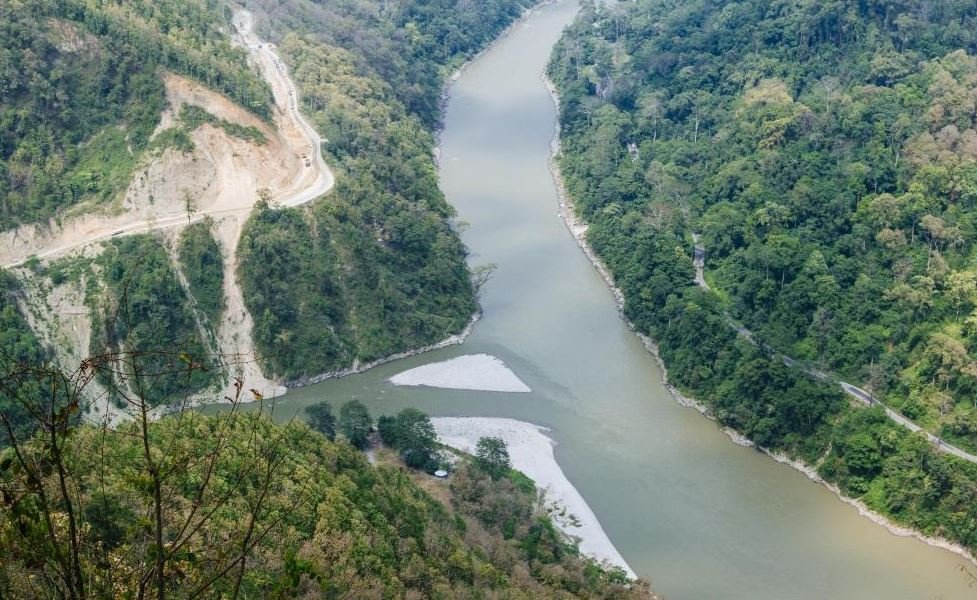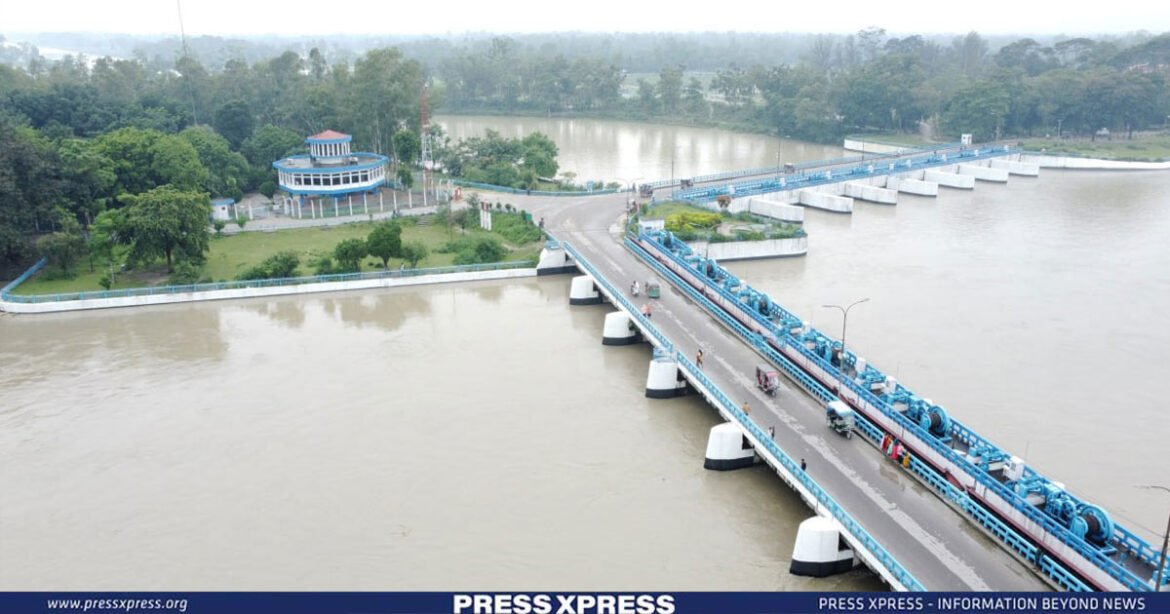Bangladesh and India have enjoyed a historic period of good relations in the past 15 years. Bilateral ties getting stronger due to the resolution of several key issues and concentrated efforts by the two country’s governments to improve ties. However, despite significant strides in improving relations, a key issue regarding water sharing remains unresolved- a comprehensive deal on sharing Teesta’s water.
You Can Also Read: INTERVIEW: Hasan Mahmud, Foreign Minister, Bangladesh
The Teesta River, which originates in the Himalayas and flows through India and Bangladesh, has been a source of contention between the two countries for decades. The dispute revolves around the equitable distribution of the river’s waters, particularly during the dry season, to meet the agricultural, drinking water, and other needs of both nations. The issue has become more urgent as the river’s flow has declined due to climate change and upstream development.
History of the Teesta Issue
The Teesta River dispute dates back to 1951 when India and then-East Pakistan signed an agreement on the sharing of the Ganges waters, which included the Teesta River. The agreement provided for the equitable sharing of the river’s waters, but it was never implemented.
After the independence of Bangladesh in 1971, the two countries established a Joint River Commission (JRC) to address the water-sharing issues of the common rivers. However, the JRC failed to reach a consensus on the Teesta River, as India and Bangladesh had different claims and demands on the river’s water allocation.
In 1983, the JRC agreed on an ad hoc arrangement, under which Bangladesh would receive 36 percent of the Teesta’s waters, while India would get 39 percent, and the remaining 25 percent would be unallocated. However, this arrangement was also not followed, as India reportedly withdrew more water than its share, leaving Bangladesh with less than 10 percent of the river’s flow during the dry season. This caused severe water scarcity and crop losses for the farmers in northern Bangladesh, who depend on the Teesta for irrigation.
In 2011, India and Bangladesh reached a draft agreement, under which Bangladesh would receive 37.5 percent of the Teesta’s waters, while India would get 42.5 percent, and the remaining 20 percent would be reserved for environmental purposes.
The agreement was expected to be signed during the visit of the then Indian Prime Minister Manmohan Singh to Dhaka, but it was stalled at the last minute due to the opposition of the West Bengal Chief Minister Mamata Banerjee, who argued that the deal would harm the interests of her state.
Since then, the Teesta water-sharing issue has remained unresolved, despite several bilateral meetings and dialogues. The issue has also become a major irritant in the otherwise friendly and cooperative relations between India and Bangladesh, which share historical, cultural, and economic ties.
India and Bangladesh Have History of Resolving Issues Peacefully
Despite the deadlock over the Teesta River, India and Bangladesh have shown their willingness and ability to resolve other outstanding issues peacefully and amicably. For instance, in 2015, the two countries signed a historic land boundary agreement.
The Agreement settled the decades-old border disputes and exchanged enclaves, thus ending the plight of thousands of stateless people living in the adverse possessions. The agreement was hailed as a model of peaceful and mutually beneficial settlement of complex territorial issues.
In 2014, the two countries also resolved their maritime boundary dispute through arbitration under the United Nations Convention on the Law of the Sea (UNCLOS), which awarded Bangladesh 19,467 sq km of the disputed area in the Bay of Bengal and gave India 7,617 sq km.
The verdict was accepted by both sides as a win-win outcome and paved the way for enhanced cooperation in the fields of energy, fisheries, and security in the maritime domain. Moreover, India and Bangladesh have also made significant progress in enhancing their connectivity, trade, investment, energy, and development cooperation in recent years.

Why it’s Crucial to Resolve Teesta Issue
The resolution of the Teesta water-sharing issue is crucial for both India and Bangladesh, as it has implications for their food security, economic development, environmental sustainability, and regional stability.
For Bangladesh, the Teesta River is vital for its agriculture, as it irrigates about 14 percent of its total cropped area, and supports the livelihoods of millions of farmers. The river also contributes to the country’s food production, as it is the main source of water for the cultivation of boro rice, the largest crop in Bangladesh.
The inadequate and erratic flow of the Teesta River during the dry season has adversely affected the crop yield and quality, and increased the vulnerability of the farmers to drought and salinity. The water scarcity has also led to social unrest and conflicts among the water users in the Teesta basin.
For India, the Teesta River is also important for its agriculture, as it irrigates about 9.6 lakh hectares of land in West Bengal and Sikkim, and supports the production of crops such as rice, maize, tea, and cardamom.
The river also provides drinking water and hydroelectric power to the people living in the region. However, the over-exploitation and mismanagement of the river’s water resources have resulted in environmental degradation and ecological imbalance, such as soil erosion, sedimentation, loss of biodiversity, and reduced groundwater recharge.
The river’s flow has also been affected by the construction of dams and barrages for irrigation and power generation, which have altered the natural hydrological regime and reduced the water availability downstream.
Agricultural Impact of Teesta Issue on Bangladesh
The Teesta issue has a significant impact on the agriculture sector of Bangladesh, as the river is the main source of irrigation for the northern region of the country, which is known as the granary of Bangladesh. The region produces about 35 percent of the country’s total rice output and accounts for about 40 percent of the country’s food surplus.
However, the region faces acute water shortage during the dry season, which lasts from December to May, due to the reduced and erratic flow of the Teesta River. According to a study by the Bangladesh Agricultural Research Council, the Teesta River’s flow during the dry season has declined by about 70 percent in the last three decades, from 6,710 cubic feet per second (cusecs) in 1985 to 2,000 cusecs in 2015.
The water scarcity has adversely affected the cultivation of boro rice, the largest and most water-intensive crop in Bangladesh, which is grown during the dry season. The boro rice covers about 4.9 million hectares of land in the country and contributes about 55 percent of the total rice production.
The Teesta basin alone accounts for about 1.3 million hectares of boro rice cultivation, which is about 27 percent of the country’s total boro rice area. However, the inadequate and irregular flow of the Teesta river has reduced the area under boro rice cultivation, and lowered the crop yield and quality.
According to a study by the International Food Policy Research Institute, the Teesta water shortage has resulted in a loss of about 1.5 million tons of boro rice production per year, which is equivalent to about 9 percent of the country’s total rice output. The study also projected that the Teesta water shortage could reduce the country’s rice production by about 8 percent by 2030, and by about 14 percent by 2050, under a business-as-usual scenario.
The water scarcity has also increased the production cost and risk for the farmers, who have to rely on alternative sources of irrigation, such as groundwater and rainwater harvesting. However, these sources are not sufficient and sustainable, as they are subject to depletion and contamination.
The groundwater level in the Teesta basin has dropped by about 10 meters in the last 10 years, due to over-exploitation and reduced recharge. The groundwater quality has also deteriorated, due to the presence of arsenic, iron, and salinity.
The rainwater harvesting is also not reliable, as it depends on the rainfall pattern and intensity, which are variable and unpredictable. Moreover, the farmers have to bear the additional cost of installing and maintaining pumps, pipes, and tanks for irrigation.
The water scarcity has also affected the livelihoods and incomes of the farmers, who depend on the Teesta River for their subsistence and survival. The farmers have to face crop losses and failures, and reduced profits and returns, due to the water shortage.
Farmers also have to cope with the increased vulnerability and uncertainty, due to the fluctuations and variations in the water availability and quality. The water scarcity has also led to social problems and conflicts, such as migration, displacement, poverty, inequality, and violence, among the water users and stakeholders in the Teesta basin.

Economic Impact of Teesta issue on Bangladesh
The Teesta issue has a significant impact on the economy of Bangladesh, as the river is a vital resource for various sectors and activities, such as agriculture, industry, fisheries, tourism, and navigation.
Bangladesh, as a lower riparian country, is naturally dependent on the Teesta River for its agriculture, fisheries, and domestic use. Teesta is the fourth largest river in Bangladesh, and its floodplain covers an area of 2,750 sq km, supporting over 10 million people and 14 percent of Bangladesh’s total crop production.
According to a study by the Bangladesh Water Development Board, the average annual flow of the Teesta at the border point of Dalia was 6,710 cusecs (cubic feet per second) before the construction of the Gazaldoba barrage, but it declined to 2,000 cusecs after the barrage became operational in 1995. The minimum flow during the lean season dropped from 1,500 cusecs to as low as 200-300 cusecs, which is far below the required level of 5,000 cusecs for irrigation purposes.
The reduced flow of the Teesta has resulted in lower crop yields, lower incomes, lower food security, and higher poverty for the farmers in Bangladesh. A study by the International Food Policy Research Institute found that the loss of Teesta water could increase the poverty rate in the northern region by 4.5 percentage points, affecting 2 million people.
Conclusion
The Teesta River is a lifeline for millions of people in India and Bangladesh, but it is also a source of conflict and cooperation between the two countries. The sharing of the Teesta waters has been a long-standing issue that has remained unresolved despite several attempts and initiatives by the governments and civil society groups of both countries.
The absence of a fair and equitable agreement on the Teesta water sharing has adversely affected the economic and environmental interests of both countries, as well as the bilateral relations and regional stability. The situation is likely to worsen in the future, as climate change poses further challenges and uncertainties for the water resources management of the river basin.
Therefore, India and Bangladesh must work together to find a mutually acceptable and sustainable solution to the Teesta water-sharing issue, based on the principles of international water law and the spirit of friendship and cooperation.
Such a solution should take into account the needs and rights of all the stakeholders, including the local communities, and should also incorporate adaptation and mitigation measures to cope with the impacts of climate change. A successful resolution of the Teesta water-sharing issue could not only enhance the water security, food security, and livelihood security of both countries, but also foster the trust, confidence, and goodwill between them, paving the way for a deeper and stronger partnership in the region.


